Introduction
Meditation is a powerful tool for beginners looking to find balance and mindfulness. In this guide, we’ll dive into the 28 Best Meditation Techniques for Beginners to Learn, offering you simple practices to reduce stress, boost focus, and improve overall well-being. Whether you’re just starting your meditation journey or looking to deepen your practice, these techniques will provide the perfect foundation for your mindfulness path.
In this article, we will discuss the 28 Best Meditation Techniques for Beginners that are perfect for those just starting out. The 28 Best Meditation Techniques for Beginners to Learn range from mindful breathing exercises to guided sessions that can be practiced daily. Whether you want to reduce stress or simply enhance focus, these techniques are beginner-friendly and highly effective.
What is meditation?
Meditation is the practice of training your mind to focus and redirect your thoughts. It’s not about stopping your thoughts but learning to observe them without judgment. Over time, this leads to a calmer and more balanced state of mind.
Why Should Beginners Meditate?
Meditation offers numerous benefits, especially for beginners:
- Reduces stress and anxiety
- Improves concentration and clarity
- Enhances emotional health
- Boosts self-awareness
- Encourages mindfulness and present-moment awareness
Starting with simple techniques ensures a stress-free and enjoyable journey.
28 Best Meditation Techniques for Beginners
Breathing Techniques for Relaxation and Focus

Technique 1: Mindful Breathing – A Simple Meditation Practice for Beginners
Mindful breathing is one of the easiest meditation techniques, ideal for newbies. That is by concentrating on your breathing in and outside of you. The act of focusing on your breath, both the inhale and exhale, will slow down sensor activity in the nervous system–thus making you less stressed (about anything really), and more aware overall. What this technique can be done anywhere — at work, during traffic — or while at home and help you to feel grounded in the present moment.
Technique 2: Deep Breathing for Beginners to Relieve Stress
Deep breathing, or diaphragmatic breathing, means you are breathing into your belly instead of your chest. This technique stimulates something called parasympathetic nervous system, which makes you to get relaxed. It increases the flow of oxygen, improves circulation and relieves anxiety Deep breathing is a good option for beginners to reduce stress.
Technique 3: Box Breathing to Calm the Mind
Box breathing is a count-based breathwork technique in which you inhale, hold, exhale, and hold your breath each for an equal number of counts — like the sides of a box. This could be helpful to calm the brain and increase focus. Great for beginners, great to reduce anxiety or improve focus with.
Meditation for Mindfulness and Awareness
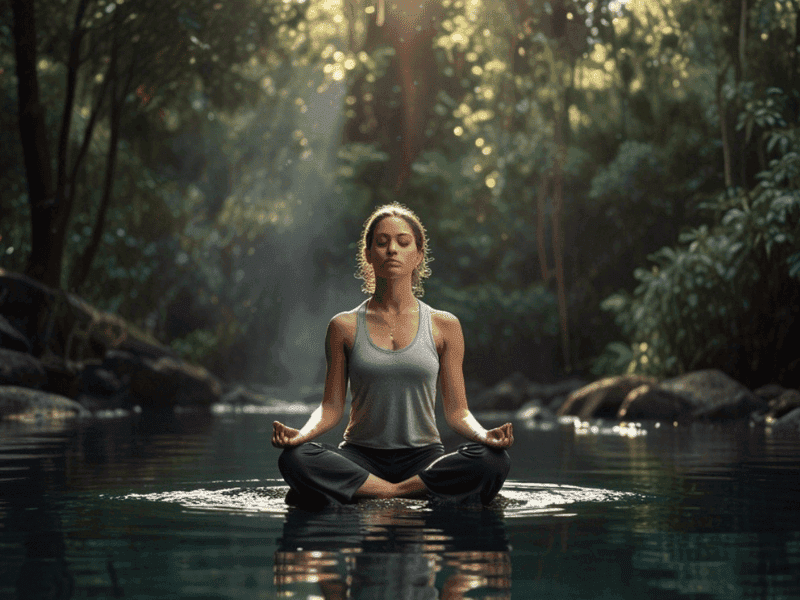
Technique 4: Guided Meditation for Beginners to Learn
Guided meditation means following along with a recording or live guide who will lead you through the meditation. This may involve visualization, body scans, and other relaxation techniques. Guided meditation is an ideal entry level practice, making it easier to stay on track with less to do and more guidance toward those benefits of meditating.
Technique 5: Body Scan Meditation for Total Relaxation
The most popular form of body scan meditation consists of focusing on the sensations in each part of your body from your feet to your head. It’s a way to practice tension release and develop the awareness of physical sensations. This is especially useful for beginners as it allows them to notice how tension or stress shows up in the body and then work to release that energy.
Technique 6: Loving Kindness Meditation to Cultivate Compassion
Loving-kindness (or Metta) meditation centers around the cultivation of compassion, kindness, and loving goodwill towards others and yourself over your mind. This is where you repeat silently “May I be happy, may I be safe,” and eventually wish the same for other people. Ideal for novices, this approach helps one develop the virtue of positive emotions. It is also a great way to practice emotional resilience.
Visualization and Focus Techniques
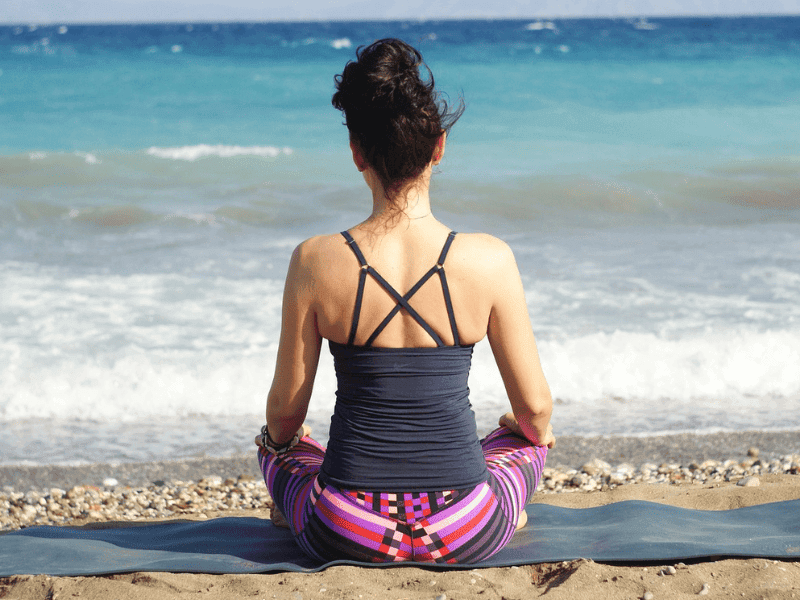
Technique 7: Visualizing Peaceful Scenes to Relax Your Mind
In visualization meditation, you imagine a calming location or scene, like a beach, forest or mountain. It is a practice that reduces; it lessens stress, quiets the nervous system, and sharpens mental focus. Its creative aspect takes your mind off daily life and helps the beginner to ease into a fun activity.
Technique 8: Candle Gazing for Focused Attention
Candle gaze concentration or Trataka is when you look at a burning candle flame for a long time. Engaging in this practice can assist in enhancing attention, increasing mental clarity and relaxing the mind. Perfect for newcomers who just want an easy tangible object to focus on while you meditate.
Technique 9: Visualization Meditation for Clear Mindset
With visualization meditation, it will provide you a mental act of creating images within your mind which are imagery that corresponds to the goals or intentions — success, health and happiness. It allows you to clarify and motivate yourself. Having a positive visualization allows beginners to start training their minds to realize what they want and what their objective is.
Meditation for Emotional Well-being

Technique 10: Affirmation Meditation for Positive Thinking
Using affirmation meditation means repeating positive statements or affirmations to help regulate your mind. This exercise allows you to counteract your negative thoughts so that they are replaced by empowering beliefs. When beginners repeatedly speak affirmations, they begin returning their brain towards self-love and positive thought patterns.
Technique 11: Gratitude Meditation to Improve Mental Health
Now, gratitude meditation will require you to focus on things that you are grateful for and this allows your mind to change the way it looks at other situations because of all the positivity inside of it and helps you better your mental health. Newcomers can experience heightened emotional well-being, decreased stress, and a more positive outlook overall with as little as 2–5 minutes of gratitude each day.
Technique 12: Self-Compassion Meditation for Beginners
To do self-compassion meditation is to give yourself the compassion and quality of care you would afford a friend. Perfect for those who struggle with self-criticism or perfectionism as a new beginner. If you pay more attention to yourself, you will experience more inner peace and emotional stability.
Movement-Based Meditation Practices
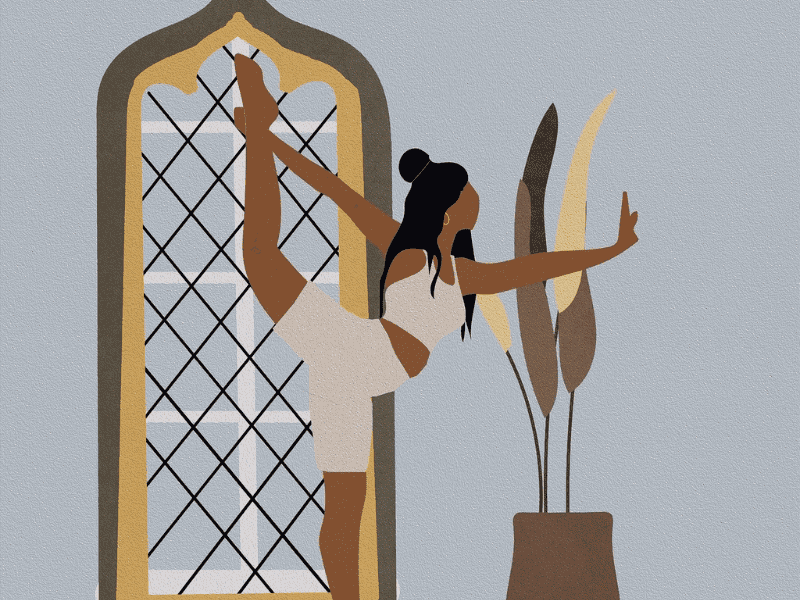
Technique 13: Walking Meditation for Mindful Movement
In walking meditation, you walk slowly and focus on each step. Such a practice provides you an opportunity to be mindful while you move. Walking meditation is an excellent starting practice for beginners as it allows one to begin meditating without necessarily sitting through long periods of stillness.
Technique 14: Yoga Meditation for Body and Mind Harmony
Yoga meditation combines physical postures (asanas) with mindfulness and breathing techniques. This practice helps improve flexibility, strength, and mental clarity. Beginners can start with simple yoga poses to create a meditative experience while also reaping the physical benefits.
Technique 15: Tai Chi Meditation for Beginners
Tai Chi is a slow, flowing martial art that combines movement, meditation, and breathwork. It’s often called “moving meditation” because it allows you to focus on each movement and your breath. Tai Chi is an excellent practice for beginners seeking to relax, improve their flexibility, and increase mindfulness.
Meditation for Stress Relief and Relaxation

Technique 16: Progressive Muscle Relaxation Meditation
Progressive muscle relaxation (PMR) involves tensing and then relaxing each muscle group in your body to release tension. This technique is highly effective for relieving stress and promoting relaxation, especially for beginners who carry physical tension due to anxiety or stress.
Technique 17: Mantra Meditation for Beginners to Relieve Anxiety
Mantra meditation involves silently repeating a word or phrase, known as a mantra, to help focus the mind and reduce anxiety. This technique is especially helpful for beginners who struggle with racing thoughts or need a tool to help them center their attention during meditation.
Technique 18: Sound Meditation Using Binaural Beats
Sound meditation involves listening to calming sounds or music to facilitate deep relaxation and mindfulness. Binaural beats, which use two slightly different frequencies in each ear, can be especially effective in promoting relaxation, improving focus, and reducing stress for beginners.
Advanced Techniques for Deeper Meditation Practice
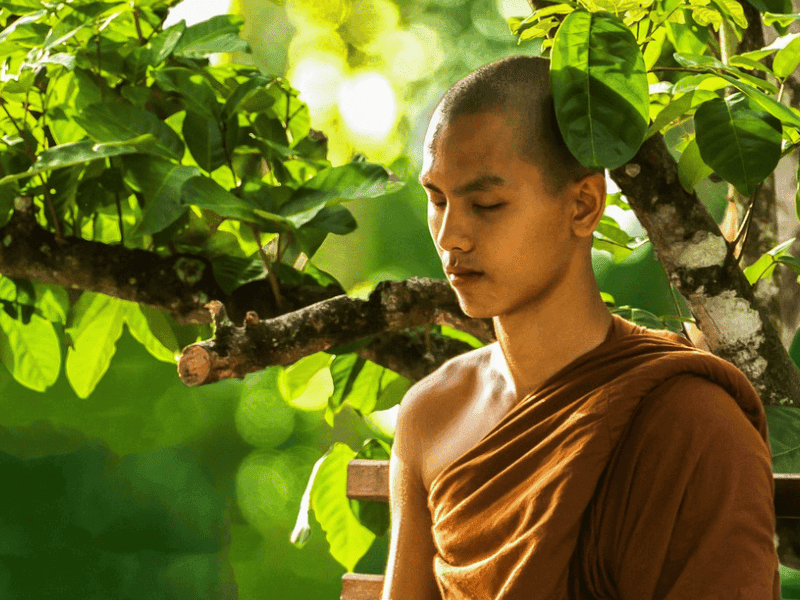
Technique 19: Transcendental Meditation for Deep Relaxation
Transcendental Meditation (TM) is a form of mantra meditation that involves repeating a specific mantra for 20 minutes, twice a day. This technique is known for its ability to help practitioners experience deep relaxation and transcend ordinary consciousness. While beginners might need some guidance, TM is a great practice for long-term benefits.
Technique 20: Zen Meditation for Beginners to Cultivate Presence
Zen meditation, or Zazen, involves sitting in silence and focusing on your breath. This minimalist approach helps beginners learn how to quiet the mind and experience pure awareness. Zen meditation is perfect for cultivating presence and mindfulness in everyday life.
Technique 21: Vipassana Meditation to See Things as They Truly Are
Vipassana, also known as insight meditation, is one of the oldest forms of meditation. It involves observing bodily sensations, thoughts, and emotions without attachment. While this technique may seem advanced, beginners can start with shorter sessions and gradually build their practice over time.
Meditation for Focus and Clarity

Technique 22: Focused Attention Meditation for Beginners
Focused attention meditation is all about concentrating on a single object, such as your breath, a sound, or a mantra. This technique trains your mind to stay focused and resist distractions. For beginners, it’s an excellent way to build concentration and mental clarity.
Technique 23: Open Monitoring Meditation to Increase Awareness
Open monitoring meditation involves observing your thoughts, feelings, and sensations without judgment or attachment. This type of meditation can increase your awareness and help you understand your mental and emotional patterns. It’s a great technique for beginners who want to develop mindfulness.
Technique 24: Mindfulness of Breath for Clear Focus
Mindfulness of breath meditation focuses solely on the sensation of your breath as it enters and exits your body. By paying attention to each breath, beginners can improve their focus and reduce mental distractions, leading to greater clarity and peace of mind.
Simple and Quick Meditation Techniques
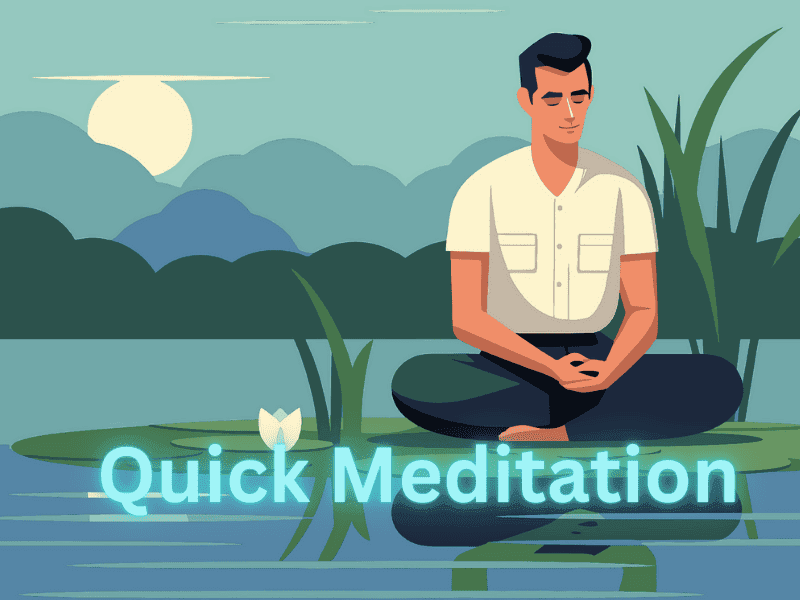
Technique 25: 5-Minute Meditation for Busy Beginners
Short but effective, a 5-minute meditation is perfect for beginners with busy schedules. Even a few minutes of mindfulness can reduce stress, increase focus, and improve mood. Simply focus on your breath for 5 minutes, or try a quick guided meditation to refresh your mind.
Technique 26: 10-Minute Meditation for Energy Boost
A 10-minute meditation is ideal for beginners looking to recharge during the day. This technique can involve deep breathing, affirmations, or visualization. Even a brief session can help you clear your mind, boost your energy, and refocus.
Technique 27: Breathing Breaks to Calm Your Mind
Breathing breaks are simple, short pauses during your day to focus on your breath and reset your mind. These quick sessions are especially beneficial for beginners who want to reduce anxiety or stress throughout the day without committing to a long meditation.
Technique 28: Quick Visualization to Reset Your Energy
A quick visualization can be a powerful tool to reset your mood and energy. Simply close your eyes and imagine a place, person, or goal that brings you peace and joy. This technique is effective for beginners seeking a fast way to relax and refocus.
Conclusion:
Meditation is a powerful tool for improving your mental, emotional, and physical well-being. By incorporating these 28 meditation techniques into your daily routine, you can reduce stress, improve focus, and cultivate a greater sense of peace. Whether you are a beginner or looking to expand your practice, there is a meditation style that suits your needs.
If you are a beginner please read our article on how to start meditating for beginners
Suggested Articles:

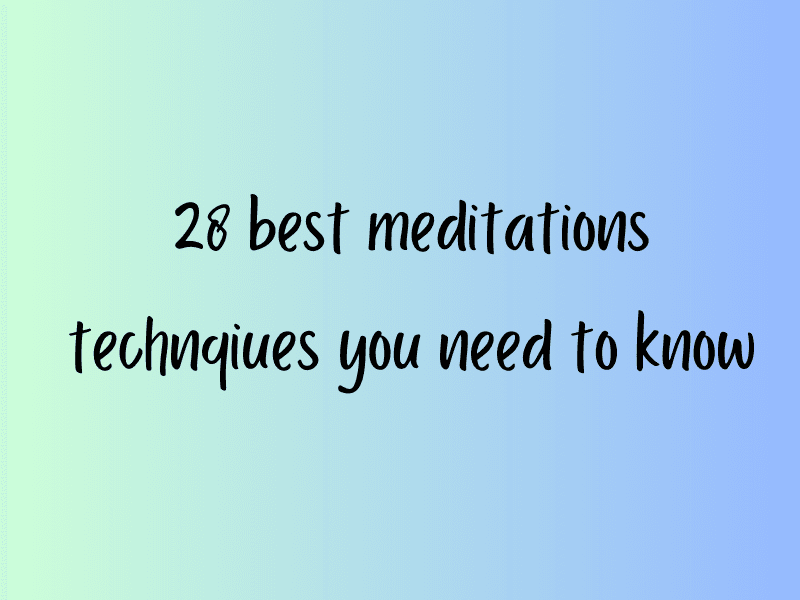
I’m really inspired with your writing talents and also with the format on your blog. Is this a paid theme or did you customize it yourself? Anyway keep up the nice high quality writing, it is rare to look a great weblog like this one these days!
I am extremely inspired together with your writing abilities as smartly as
with the layout for your blog. Is this a paid topic or
did you modify it your self? Either way stay up the nice high quality writing, it’s uncommon to peer a nice weblog like this one today.
LinkedIN Scraping!
Thankyou 🙏